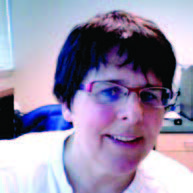 In the Bay Area, alternative approaches to health and healing are hardly radical. Even nationwide, nearly 40 percent of the population accesses non-traditional healthcare. There is an array of potentially confusing terms, though.
In the Bay Area, alternative approaches to health and healing are hardly radical. Even nationwide, nearly 40 percent of the population accesses non-traditional healthcare. There is an array of potentially confusing terms, though.
“Alternative” refers to using a healthcare system outside mainstream Western or allopathic medicine. In practice, I believe most people use alternative care in addition to mainstream medicine, so it’s actually referred to as “complimentary.” The acronym for this is CAM, meaning complimentary alternative medicine.
Many of our local hospitals have “integrative centers,” including CPMC’s Institute for Health and Healing, UCSF’s Osher Center, and St. Mary’s Dignity Health Center, to name a few. There are also individual providers within medical groups, such as One Medical, as well as private practices that offer holistic medicine, traditional Chinese medicine, homeopathy, Ayurveda, Reiki, Feldenkrais, osteopathy, naturopathy and more.
If you ever question a practice or method, you can check out www.quackwatch.com, which is a self-described “guide to quackery, health fraud and intelligent decisions.” Also, the very mainstream NIH sponsors the National Center for Complementary and Alternative Medicine, whose mission is to study the utility and safety of complementary and alternative medicines.
I recommend alternative approaches as adjunctive care, particularly for problems that Western medicine finds difficult to treat, such as autoimmune diseases. Alternative health systems might define the condition differently, but their approaches may help. Traditional Chinese Medicine will treat symptoms like fatigue or neuropathy while defining the illness as a problem in the Chi. For dermatologic issues that defy the best Western care has to offer, try homeopathy. It views the skin as the first manifestation of disease. If you are suffering from intractable migraines, osteopathic manipulation may provide relief.
As for Western medicine, there are great, good, mediocre, and bad providers. It may be harder to navigate and find a great practitioner or to figure out if you are getting good care. Ask what to expect and get second opinions if you aren’t sure. Be skeptical if you are told to stop taking a prescribed medication. Likewise, if you are using an alternative medicine, be sure your Western provider accepts it as part of your health care. Your providers should work with each other. Western providers should be aware of herbal supplements you use. Interactions with Western drugs can, and should, be researched at sites like the Natural Medicines Comprehensive Database.
San Francisco’s Health Department dropped alternative medicine as a funded service several years ago, even though this form of medicine and remains quite popular. Medicare and Medi-cal did too. Acupuncture, however, is now a covered service in the new affordable health care act.
I’d like to give a shout out to two local clinics that have persevered serving our community for decades: The Immune Enhancement Project in the Castro and Quan Yin Healing Arts in the Mission. Both have acupuncture drop-in clinics that provide low cost care (or by donation). A weekly drop-in clinic designed specifically for HIV positive individuals is available at Quan Yin Healing Arts.
In San Francisco, where the alternative is normal, an alternative medicine center can be found on almost every block. Check your insurance to see what’s included, and take advantage of these often helpful, healing services.
Dr. Naomi Jay is a nurse practitioner in the department of Infectious Disease at UCSF.
Recent Comments